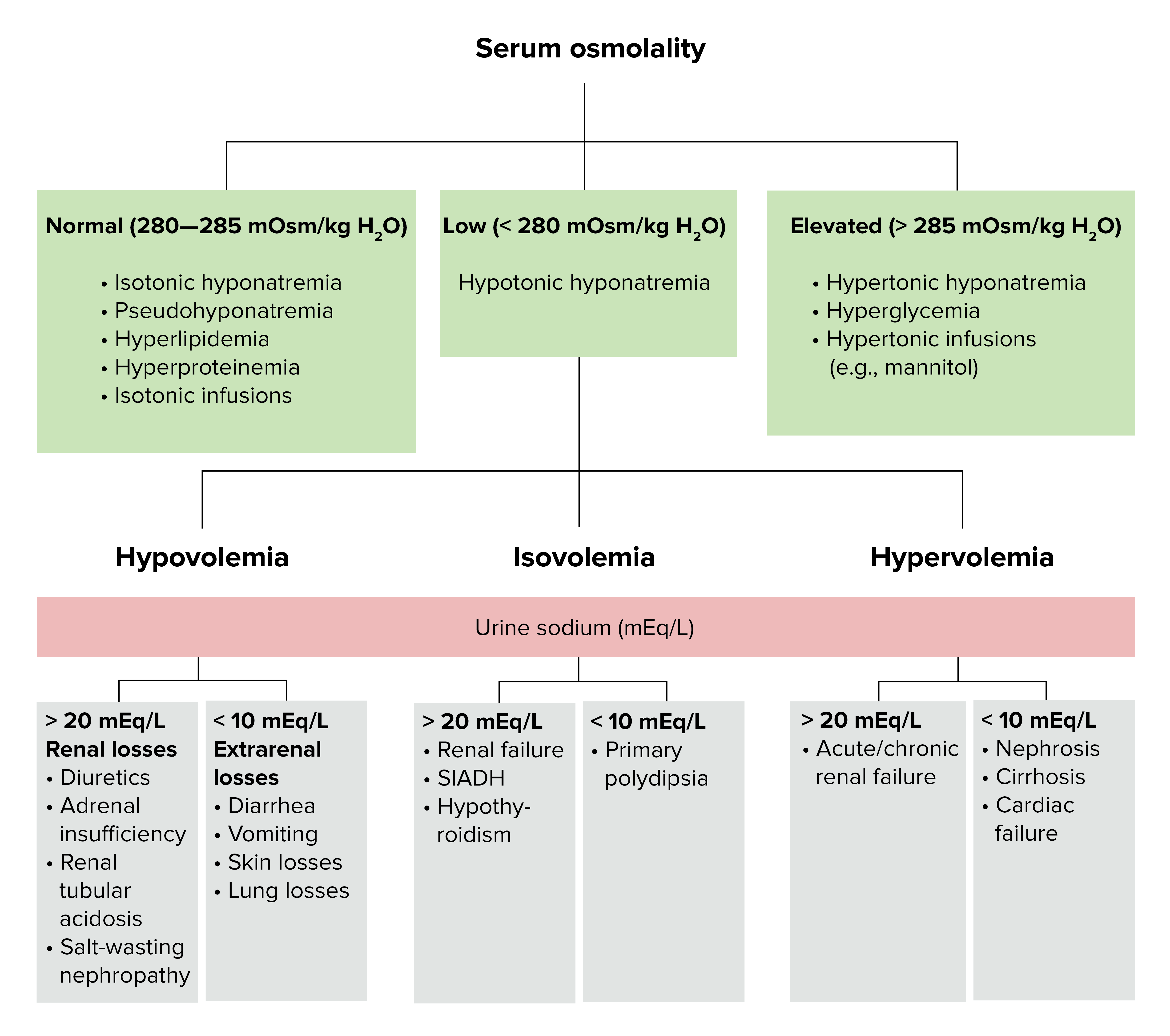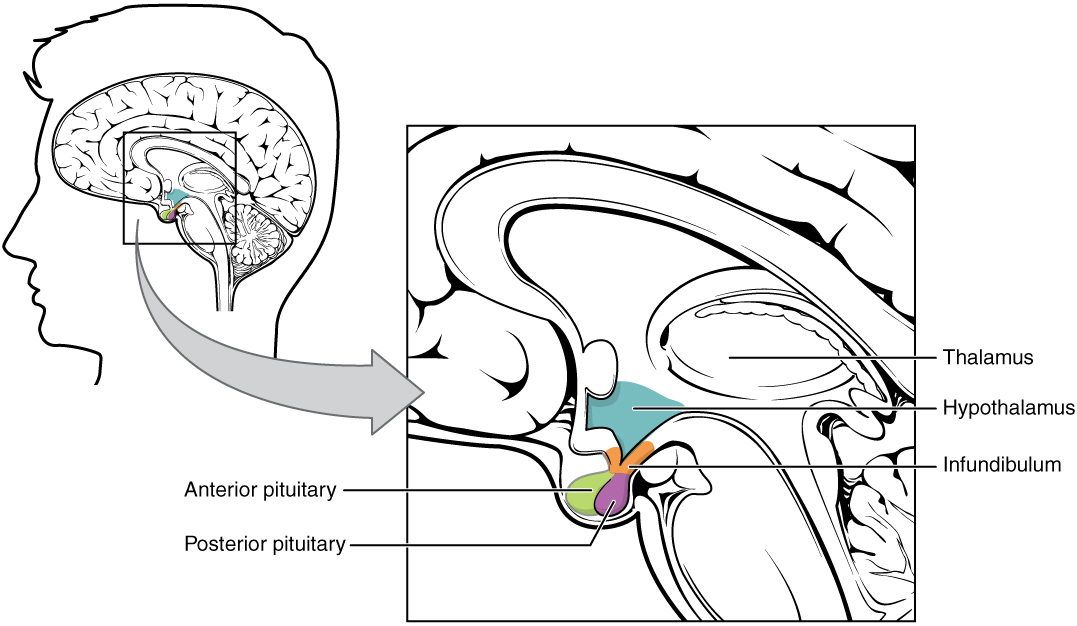Playlist
Show Playlist
Hide Playlist
Regulation of ADH: Volume vs. Osmolarity
-
Slides RegulationADHandSIADH RenalPathology.pdf
-
Reference List Pathology.pdf
-
Download Lecture Overview
00:00 In order for you to approach this graph, a different twist complicated? No, it is not. If you have understood everything I said, you will be good here. Or what you are going to do ladies and gentleman is pay attention to what I am saying and only after I give you the priority, then on your own time, you are going to move through another point. You will see what I am talking about. So stick with me very closely. Here we have the X-axis. The X-axis represents plasma osmolality. The reason that I am emphasizing plasma is because as students talk about osmolality and the boards in the wards, everyone expects it to be lowered at all times and so, therefore, whatever that comes out of your mouth must represent or reflect what you are actually thinking right? So that osmolality, two major compartments, urine, plasma. You always pay attention to the adjective of that osmolarity. Here it is plasma. Are you clear? With the plasma osmolality, let us say they we are approximate 280. That green line in the middle that you see there then represents your normal ADH release. Once again you tell me who is the most important regulator of your plasma osmolality. Is it ADH or aldosterone? Good. It is ADH. 01:21 So as you move up the X-axis, 280, 290, 300, 310. I am not going as far as 310, let's go about 300, you will notice that there is a linear increase in plasma ADH release, as it should be. Now take a look at this. Why in the world did your ADH release so significantly increase when you had only little bit of change in plasma osmolality? This is the red line and this is the most important point that you want to take out of this. Once you have understood this, I am not going to cover that 10 percent decrease in volume. I will, however, talk about the 10 percent decrease of volume and pressure and as to what kind of effect it then has on ADH. If you are going to lose greater than 10 percent of your volume, what does this mean to you? Massive hemorrhage who have hypovolemic shock, do we not? You are going to have a crossover effect in which you have angiotensin II which is also going to stimulate the posterior pituitary to release ADH. So now what ends up happening? Even at low levels of plasma osmolarity at 270. Let us say that the lower normal limit is 275, and even before we begin, listen, say that you have low plasma osmolarity, what should normally be your ADH release? Take a look at the normal, the green line come all the way to the bottom come to about less than 280. You start coming less than 280, where are you? You are at zero. 02:56 So that would mean that if you are less than 280, you should not be releasing any ADH. 03:01 Correct? So why in the world at 270, you have such a spike. Take a look at the red line. 03:08 Why there was such a spike in ADH? Because a massive loss of volume, and this would then as I said, the volume takes precedence over the osmolarity even though it is decreased so that you can raise their blood pressure. Once you have understood that, you can then move on. If you want, you may then take a look at the other side here where we have a 10 percent increase, but at this point, it is much more important that you pay attention to the red line. Significant, the hypothalamic osmostat is reset by large changes in volume, by large change we mean greater than 10 percent. For example, hypovolemia. A given plasma osmolality, let us say at 270, will result in a much higher ADH. Take a look at 270. Let us say about 275 right there. Move up the Y-axis. You see then the red line that is because of massive hemorrhage, ADH is in there. ADH is absolutely increased so that it can restore the blood pressure. ADH levels will be titrated to achieve a lower plasma osmolality and that will actually be the goal to replenish your blood pressure. A lot of information there. 04:19 Good stuff. Detailed, just enough where you can get every question right. It is just enough so that it has you thinking so you put in the physio and the pathology and you are able to properly manage your patient and know what the heck is going on when you get labs and require to properly interpret. Let us now move on.
About the Lecture
The lecture Regulation of ADH: Volume vs. Osmolarity by Carlo Raj, MD is from the course SIADH.
Included Quiz Questions
Which of the following is the effect of elevated ADH release?
- An increase in the absorption of water and a decrease in the urine output.
- A decrease in the absorption of water and the urine output.
- An increase in the absorption of water and the urine output.
- A decrease in the absorption of water and an increase in the urine output.
- A decrease in the urine output only.
What happens to the level of the antidiuretic hormone during a massive fluid loss?
- It increases.
- It decreases.
- Neither increases nor decreases.
- It becomes resistant to changes.
- It may go up or down, depending on the circumstances.
Customer reviews
5,0 of 5 stars
| 5 Stars |
|
5 |
| 4 Stars |
|
0 |
| 3 Stars |
|
0 |
| 2 Stars |
|
0 |
| 1 Star |
|
0 |






